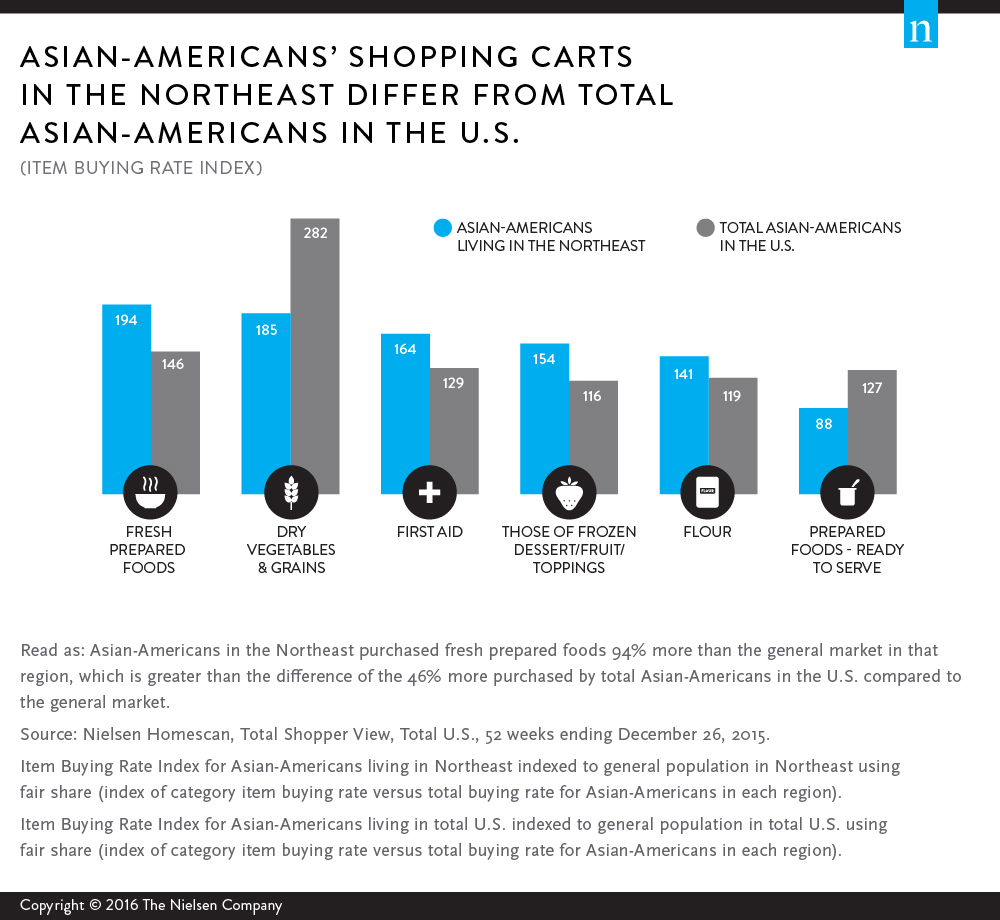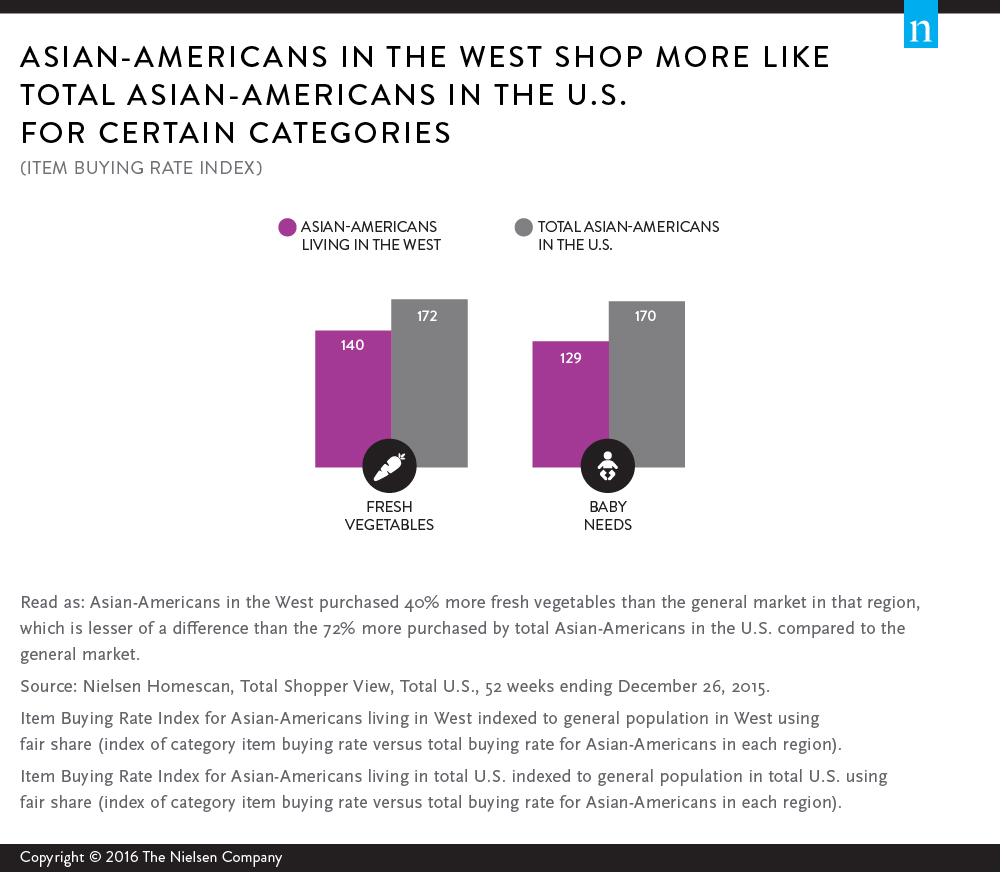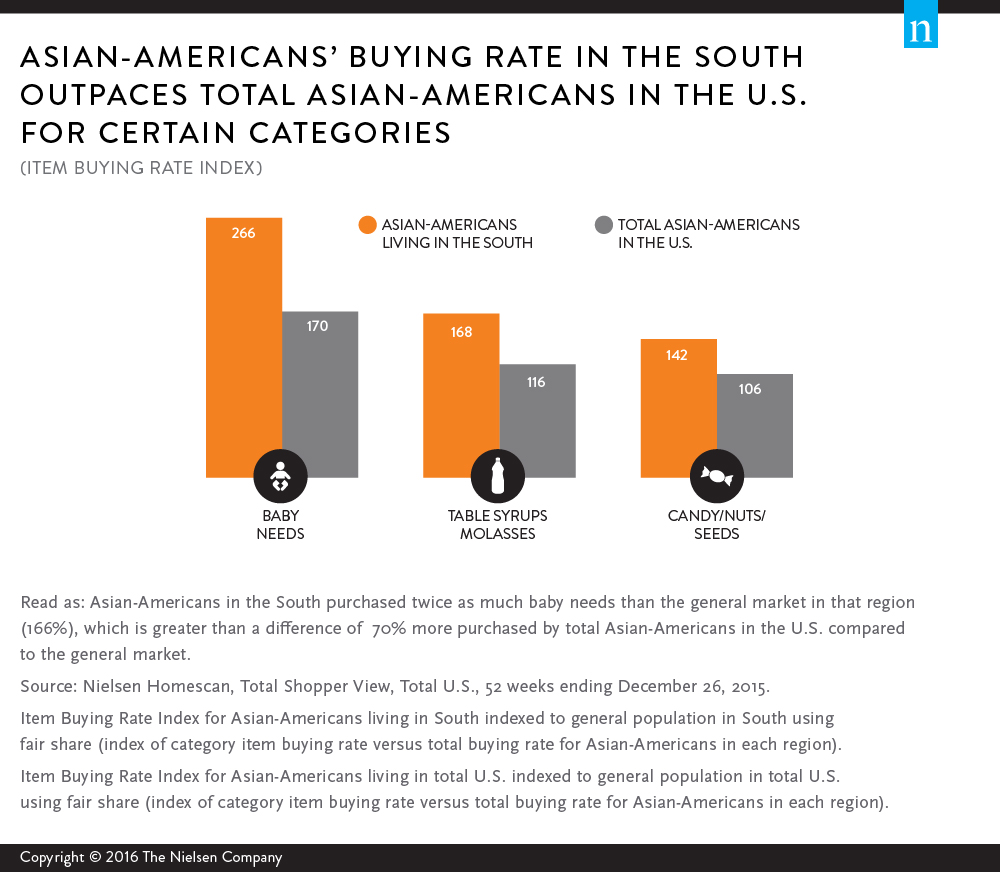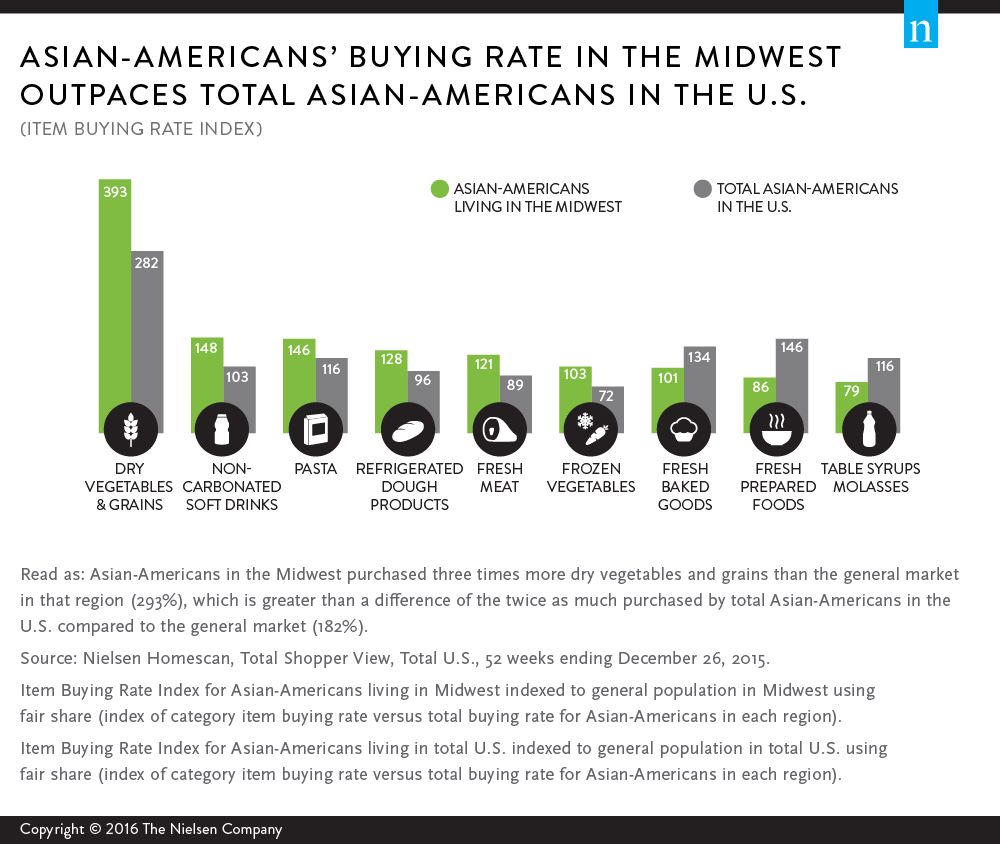For Asian-Americans, food is an essential part of their cultural heritage and an element passed on from generation to generation. And as Asian-Americans grow in number across the U.S., they’re also influencing the food shopping habits of the overall population—with certain regional variations.
A HEALTHFUL MIND-SET DRIVES GROCERY PURCHASING BEHAVIORS
Asian-Americans are health-conscious consumers who often believe food is the pathway to health and beauty. A diet consisting mostly of protein-rich foods such as fish, nuts, rice and poultry keeps Asian-American shoppers true to their cultural heritage and to deeply-rooted traditions.
According the findings in the latest Diverse Intelligence Series report, Asian-Americans: Culturally Diverse and Expanding Their Footprint, Asian-American households purchase more dry vegetables and grains than the total population at an item-buying index rate (the average volume for the item purchased per household) of 282—almost three times as much (182% more). On average, Asian-Americans purchased 69% more fresh seafood per household than did the total population, and 72% more fresh vegetables.
Not only are the ingredients important, the preparation is as well. The report found 79% of Asian-Americans agree they prefer cooking with fresh food rather than canned or frozen, and 71% agree that they rarely eat frozen dinners. In addition, 85% of Asian-Americans say they try to eat healthy—and they say they pay attention to their nutrition and purchase organic foods at a rate 52% higher than the total population. Sixty-five percent of Asian-Americans say they try to buy foods grown or produced locally.
REGIONAL PREFERENCES, TRENDS AND INFLUENCES ON THE MAINSTREAM
In addition to a preference for vegetables and fresh foods, Asian-Americans also seek out soy milk, seaweed, Asian curries and other cultural food traditions brought over from Asian countries. And specialty items such as these are examples of Asian-influenced items that have influenced the general population’s shopping habits and are now available in mainstream retailers across the U.S. The density of the Asian-American population in the West and Northeast has contributed to the heavy influence on general market shoppers in these areas. However, while many Asian-American consumers in different regions of the U.S. have similar tastes and buying habits, there are still some notable differences across each region.
NORTHEAST AND WEST
Asian-Americans in the Northeast purchase 85% more dry vegetables and grains than the general market in that region, which is lower than the 182% more in the same category spent by total Asian-Americans. This suggests that the general market in the Northeast is more heavily influenced by Asian-Americans’ dietary habits than is the country in total. In other categories, while Asian-Americans in the Northeast differ less from the general market in dried vegetable and grains, they differ more from the general market compared to the total U.S. Asian-American population in the fresh prepared food, flour, desserts and first-aid categories.

On the West coast, Asian-Americans purchase fresh vegetables and baby needs at levels more like those of the general population in that region than do all Asian-Americans in the U.S. compared to the total population. Asian-American purchasing behaviors in the Northeast and the large Asian-American population in the West suggests the differences in buying behaviors between Asian-Americans and the total population are less than the differences in regions where Asian-Americans are a smaller percentage of the population.

SOUTH AND MIDWEST
Because the South and Midwest are emerging markets for Asian-Americans, those living in these areas differ the most from the general market. In the South, Asian-Americans’ purchase levels of baby needs, table syrups, candy, nuts, and seeds differ the most from the general market.

Asian-Americans living in the Midwest differ the most from the general population in their purchasing of dried vegetables and grains. Among eight other categories, they exhibit the greatest differentials in pasta, soft drinks, refrigerated dough and fresh meat.

Other report findings include:
- Asian-Americans outpace the general population in ownership of all three major Internet personal devices: smartphones, household computers and tablets. Online purchasing sentiment outpaces the general market, as well.
- Of the 87 U.S. start-up companies valued at over $1 billion (as of Jan. 1, 2016) that are yet to be publicly traded on the U.S. stock market, 19 were founded by Asian-American immigrants.
For additional insight, download Nielsen’s 2016 Asian-American Consumer report.



